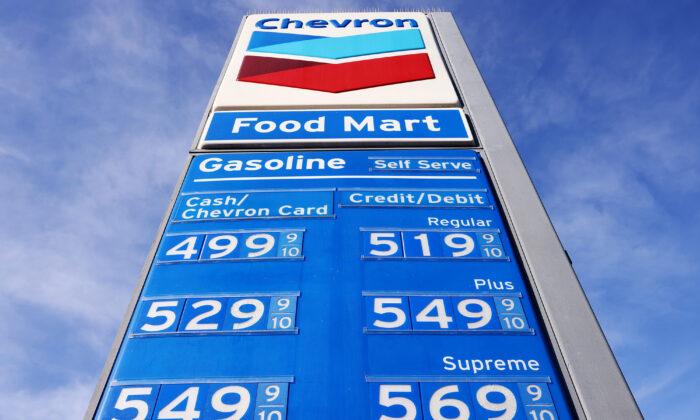Consumer prices accelerated in the year through November at their fastest pace in 39 years, new government data shows, marking the sixth straight month of inflation running above 5 percent and delivering a fresh sign that inflationary woes continue to bedevil the U.S. economy.
The biggest contributors to November’s rate of inflation were gasoline, shelter, food, used cars and trucks, and new vehicles, the BLS report said, noting a 3.5 percent month-over-month rise in the energy index and a 6.1 percent rise in the gasoline index. On a 12 month basis, energy prices shot up 33.3 percent while food prices rose 6.1 percent, with the changes representing the largest over-the-year rises in both measures in at least 13 years.
“Further evidence of inflation broadening out, household furnishings, apparel, and the usual suspects of new and used vehicle prices all posted outsized increases in November,” Bankrate Chief Financial Analyst Greg McBride told The Epoch Times in an emailed statement. “Inflation is outpacing increases in household income and weighing heavily on consumer confidence, which is at a decade low. It is only a matter of time before it impacts consumer spending in a material way.”
Besides high inflation, a flurry of labor market data—including job openings rebounding to near-record highs, the labor force participation rate edging up, unemployment falling to 4.6 percent, and weekly jobless claims plunging to their lowest level since 1969—have further bolstered the case for monetary tightening.
“Seeing substantial and more than ‘transitory’ inflation, high levels of job openings and the ongoing ‘Great Resignation,’ the Federal Reserve appears to be in the process of making a shift to a quicker end to monthly asset purchases,” Bankrate Senior Economic Analyst Mark Hamrick told The Epoch Times in an emailed statement. “That’s a likely prelude to higher interest rates sooner. But record low interest rates can’t and shouldn’t last forever.”
The Fed is currently on track to phase out its $120 billion per month in bond purchases at a pace of $15 billion per month, which would conclude the process in June. The Fed has, however, left the door open to a faster taper if conditions warrant, with expectations building for that to be the case when the central bank convenes its next policy meeting next week.





